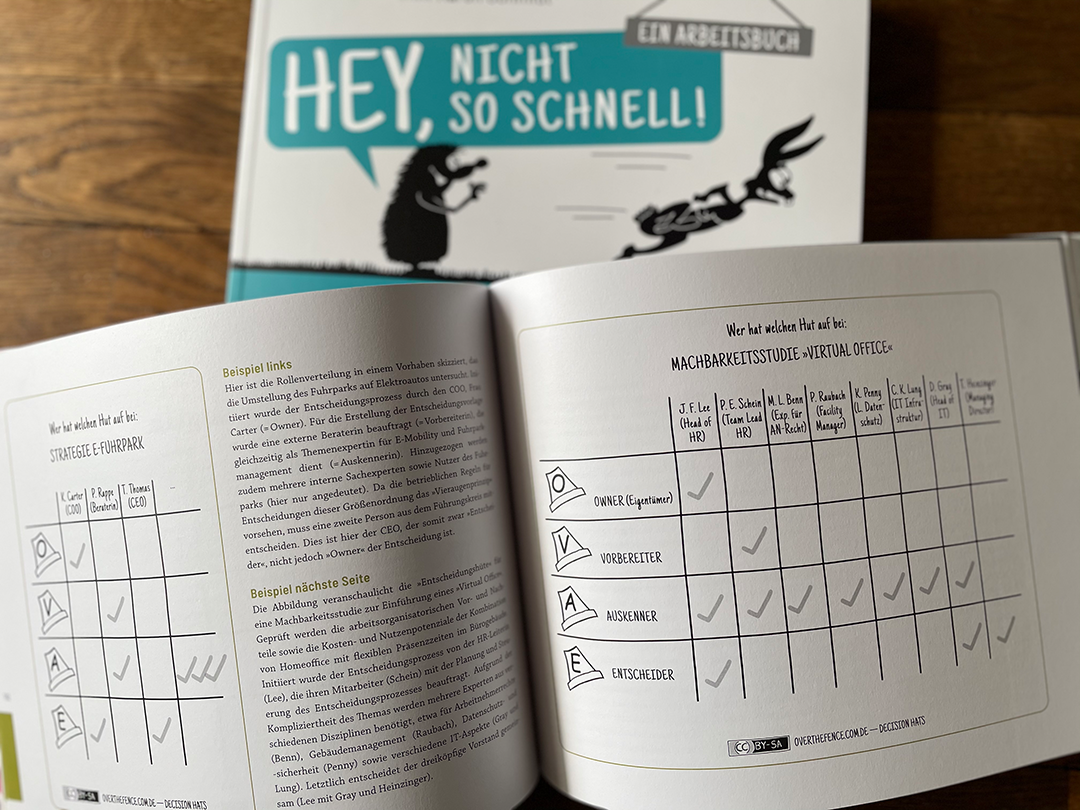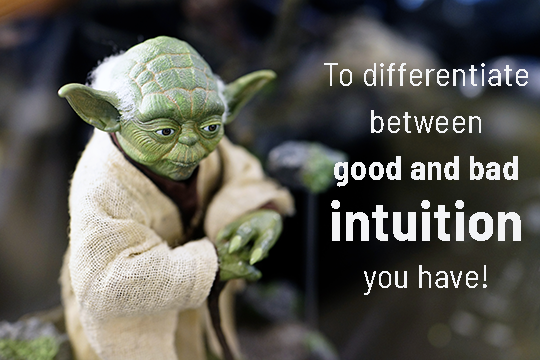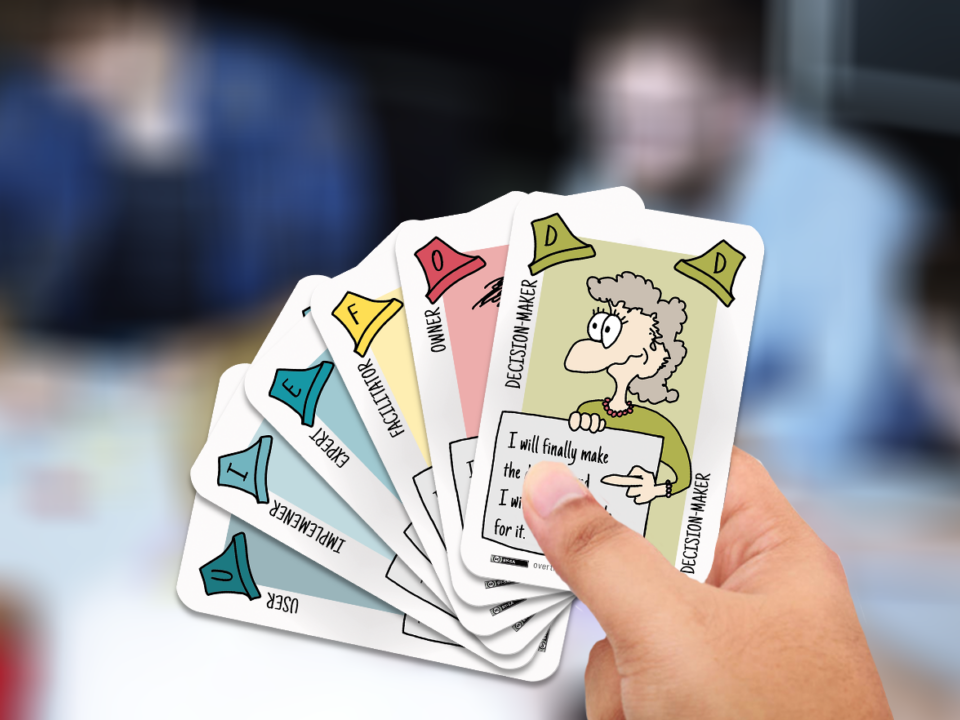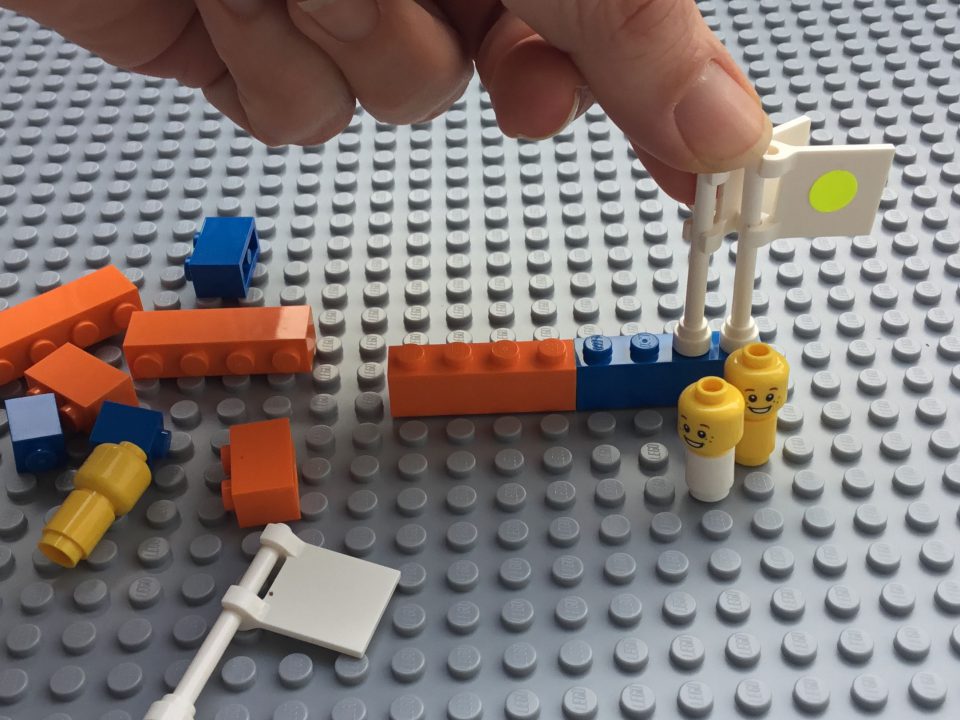Hey, not so fast!
We have written a new book! Why? Because we all the time meet people who waste their energy in corporate “decision-making processes”. So that we don't misunderstand each other: Deciding is important! And taking part in decision-making processes is a good thing. But it has to be the right form of participation - one that is meaningful, appropriate and feasible.
Almost every third decision in an organization does not have an "owner"!
Above all, however, it must be about decisions that are really needed and wanted. Unfortunately, this is far too seldom the case. In our random tests we were able to identify up to 30% decisions (in organizations) that were neither needed nor wanted. Or to put it another way: in 30% of the cases nobody could be identified who really needed the said decision, who raised his hand and said, “Yes, I want this decision”. But there has to be someone like that - at least one. Otherwise nobody can provide information about the purpose of a decision. And nothing makes sense without a purpose!
Just because you need a decision doesn't mean you have to decide for yourself!
We call people who want and need a decision (and who say it out loud) the “owners” of a decision. It is important to note that the owner of a decision is not necessarily also the “decision maker”. And the "owner" does not have to control and direct the decision-making process. Our book is about this differentiation. It's about breaking up traditional organizational patterns, overcoming management myths and recognizing degrees of freedom. Only in this way can we make “good” decisions in complex and uncertain times.
"Slow thinking" promotes conscious decision-making!
We have developed novel tools so that we can use all the necessary degrees of freedom. These tools help people in organizations to create a good process for finding complex decisions - under the pressure that is usually prevalent in everyday business. The use of the tools enables conscious, i.e. "slow thinking" (according to Daniel Kahneman). This is what this book is about: about pragmatic tools that help avoid mistakes in thinking and perception in decision-making processes, in order to consciously increase the quality of decisions.
Here are 7 tools for making better decisions from our book.
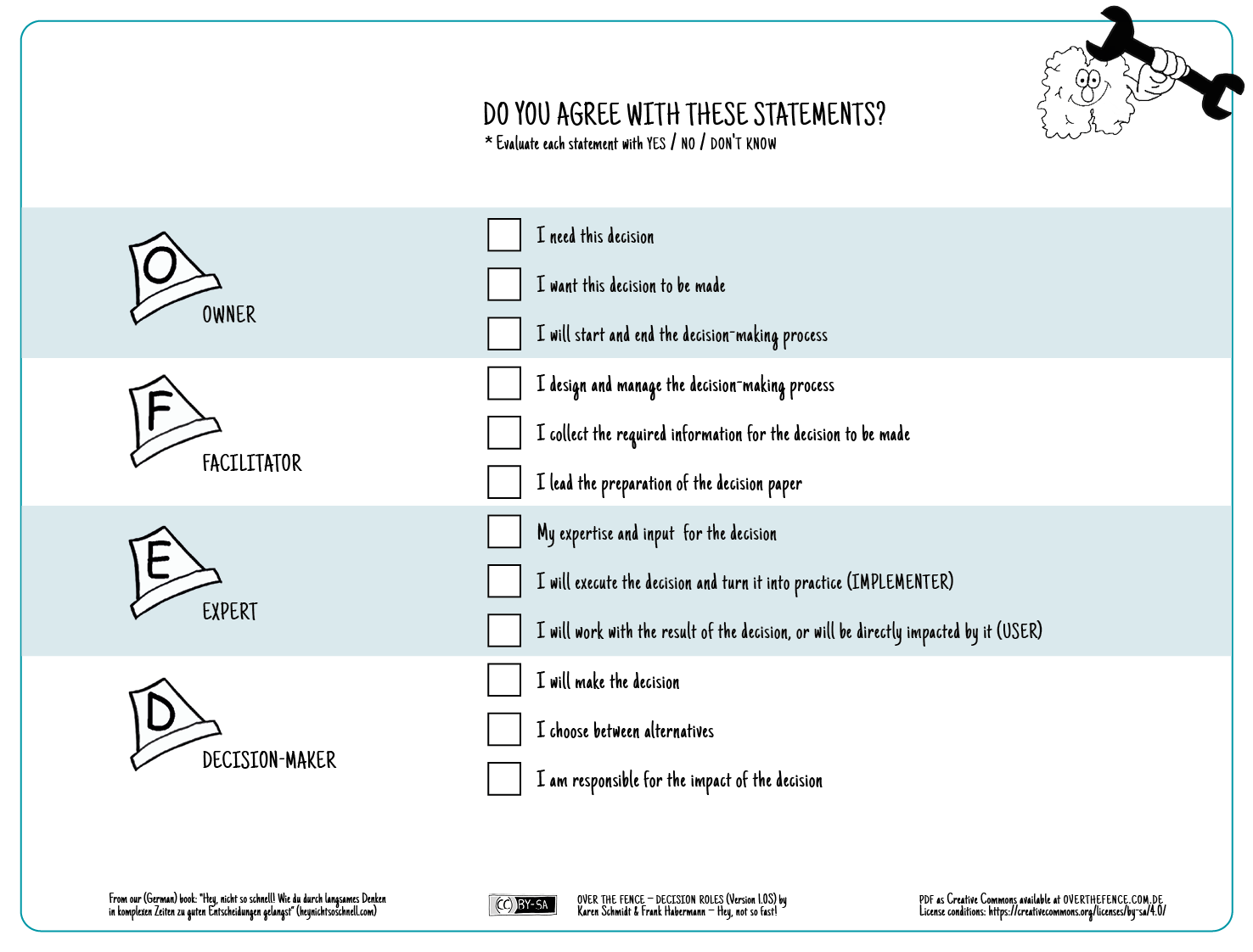
1 Decision Roles
A checklist that helps to clarify the roles in a decision-making process - especially the role of the "owner". Principle: No decision-making process without an owner
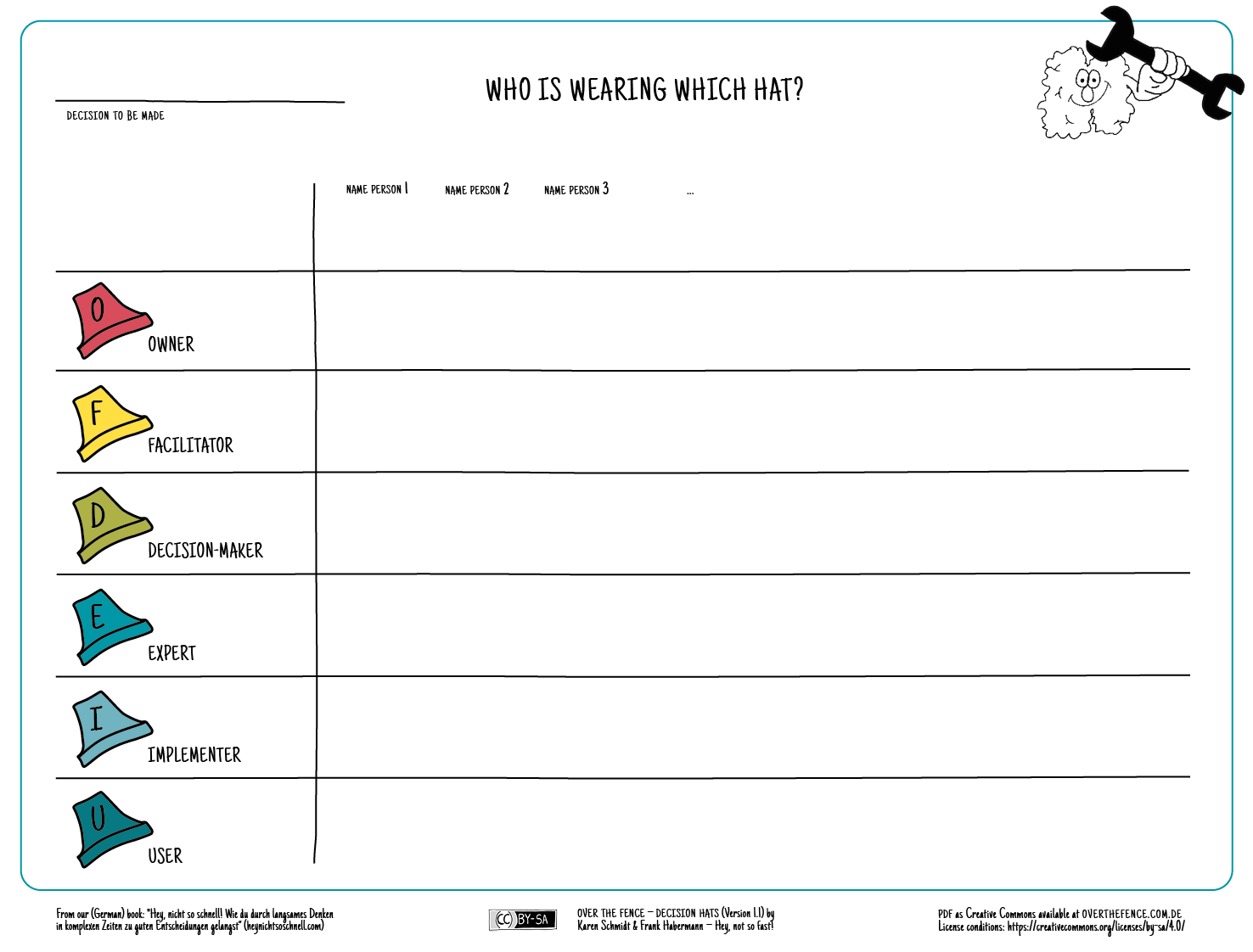
2 Decision Hats
With this tool you can continue the results of the “Decision Roles”. Assigns each person their role (s) in the decision-making process. Principle: All roles must be filled - every stakeholder knows his responsibilities
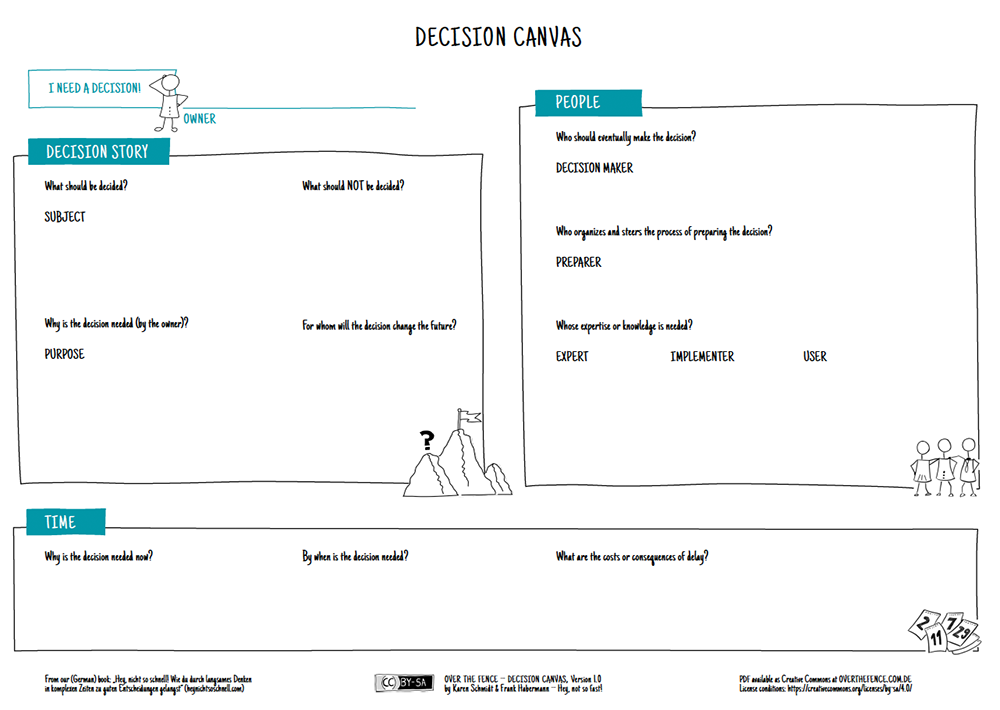
3 Decision Canvas
Allows you to systematically think through the need for a decision and to develop a common understanding with all those involved. Principle: a decision is good if it has a purpose and meets the requirements of the "subject" as well as the "people" involved
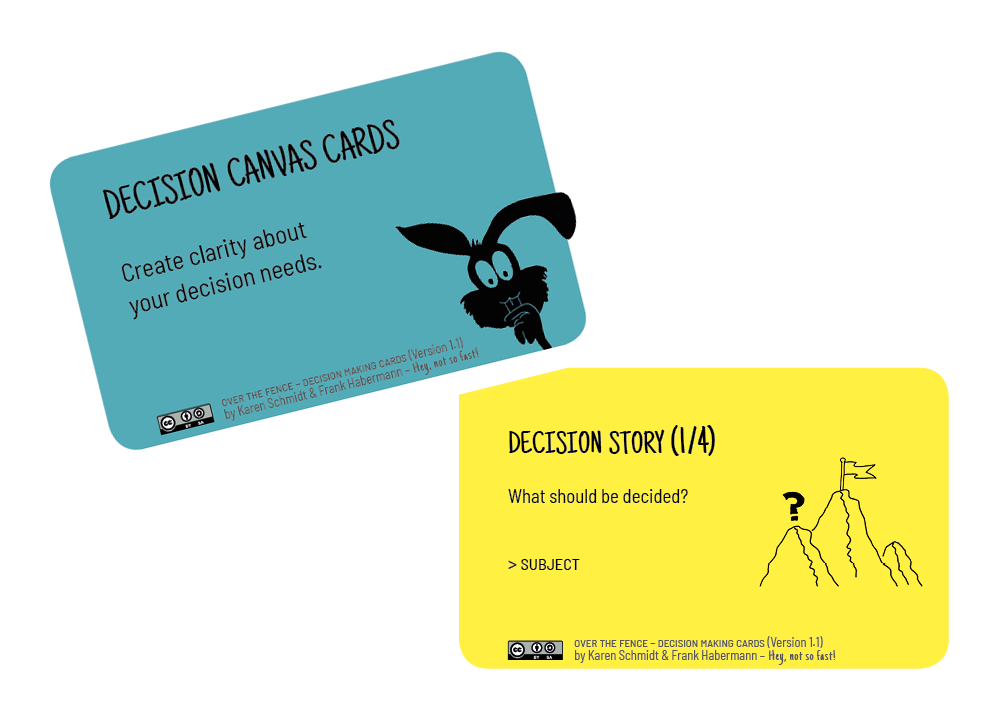
4 Decision Canvas Cards
Playing cards with the ten questions of the Decision Canvas that make it possible to systematically think through each decision need. You may use the Decision Canvas to visualize the answers. Principle: Obtain unbiased information through open questions
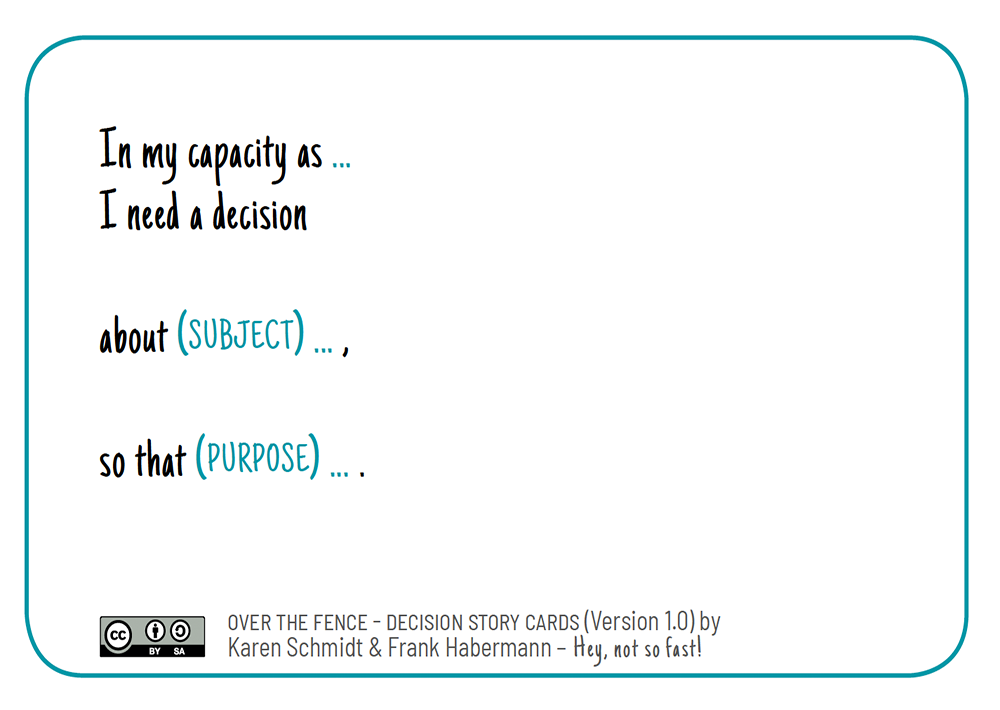
5 Decision Story
Helps - similar to a user story - to formulate a need for a decision and to specify it as a small meaningful story. Principle: bring the need for decision "to the point" and make it communicable
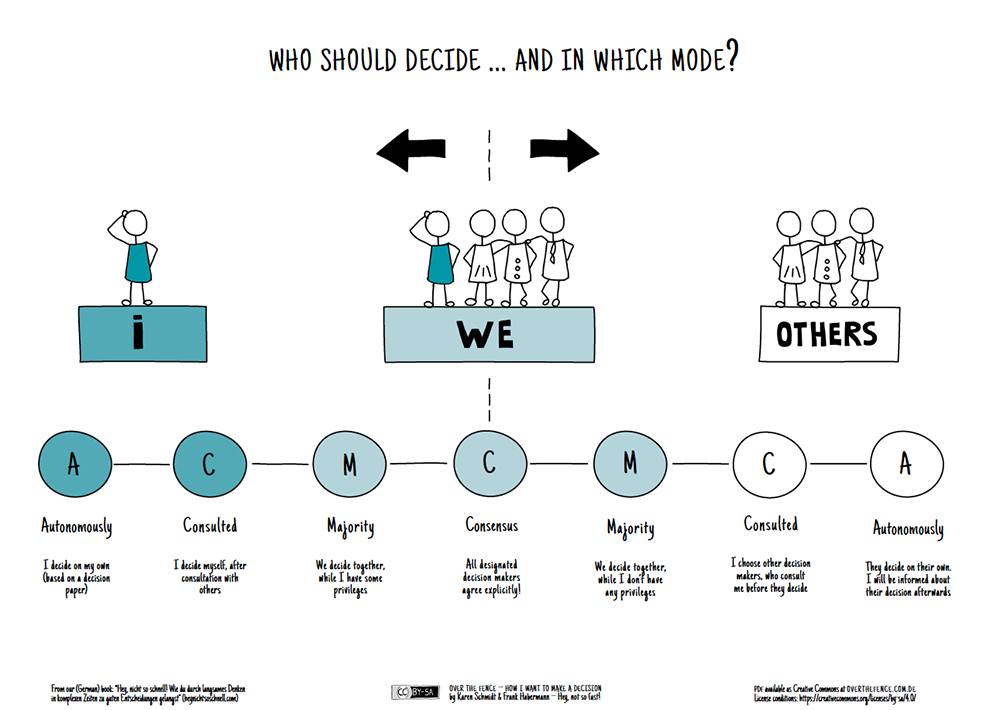
6 Decision Modes
A poster that shows your freedom of choice when it comes to the question: How do I want to make a decision? It invites you to take a closer look and reflect. Do you want to decide? Do you want others to decide? Which form of "we decide" would be best? Principle: consider all degrees of freedom before you choose
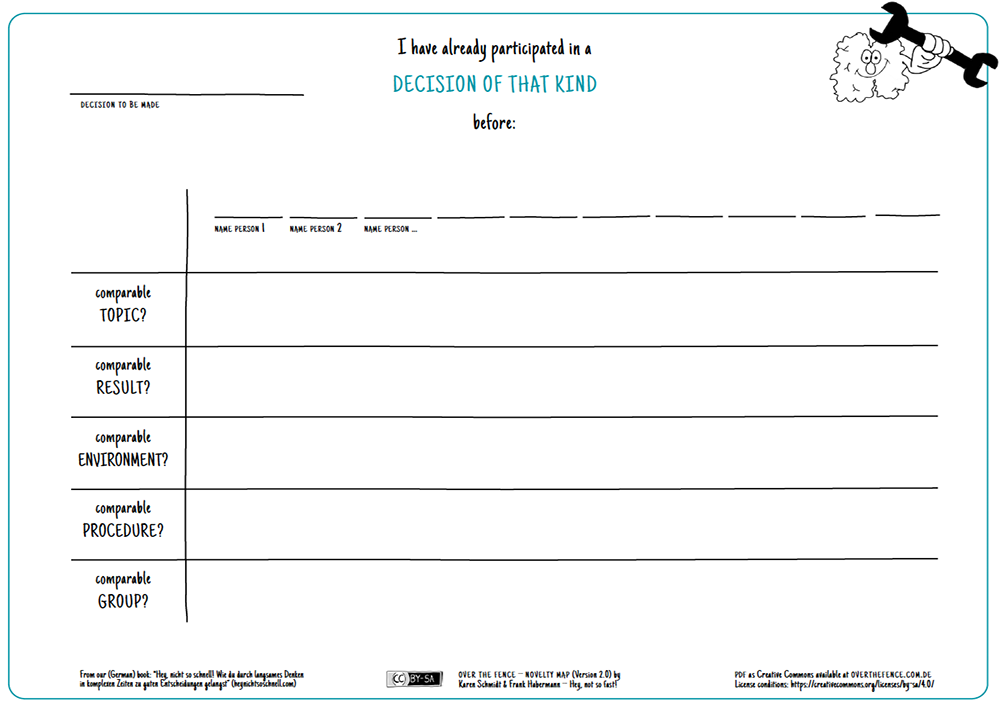
7 Novelty Map
Allows you to find out how novel a decision really is. Because only new types of decisions require “slow thinking”. The tool belongs at the start of a decision-making process. Principle: Before you start making a decision, assess the novelty from the perspective of those involved
All tools are creative commons, i.e. available free of charge!
The book provides helpful guidelines
Before using the 7 mentioned tools to make better decisions, we highly recommend taking a look at the book. There is a detailed description of how you can achieve the best possible results with the said instruments.
By book on Amazon (German version)
Or wherever you can buy books (support your local bookseller!)
Book website: https://heynichtsoschnell.com
Related workshops and seminars:
- The Power of Slow Thinking (Leadership Workshop)- Reinventing a New Project Culture (Leadership Workshop)

